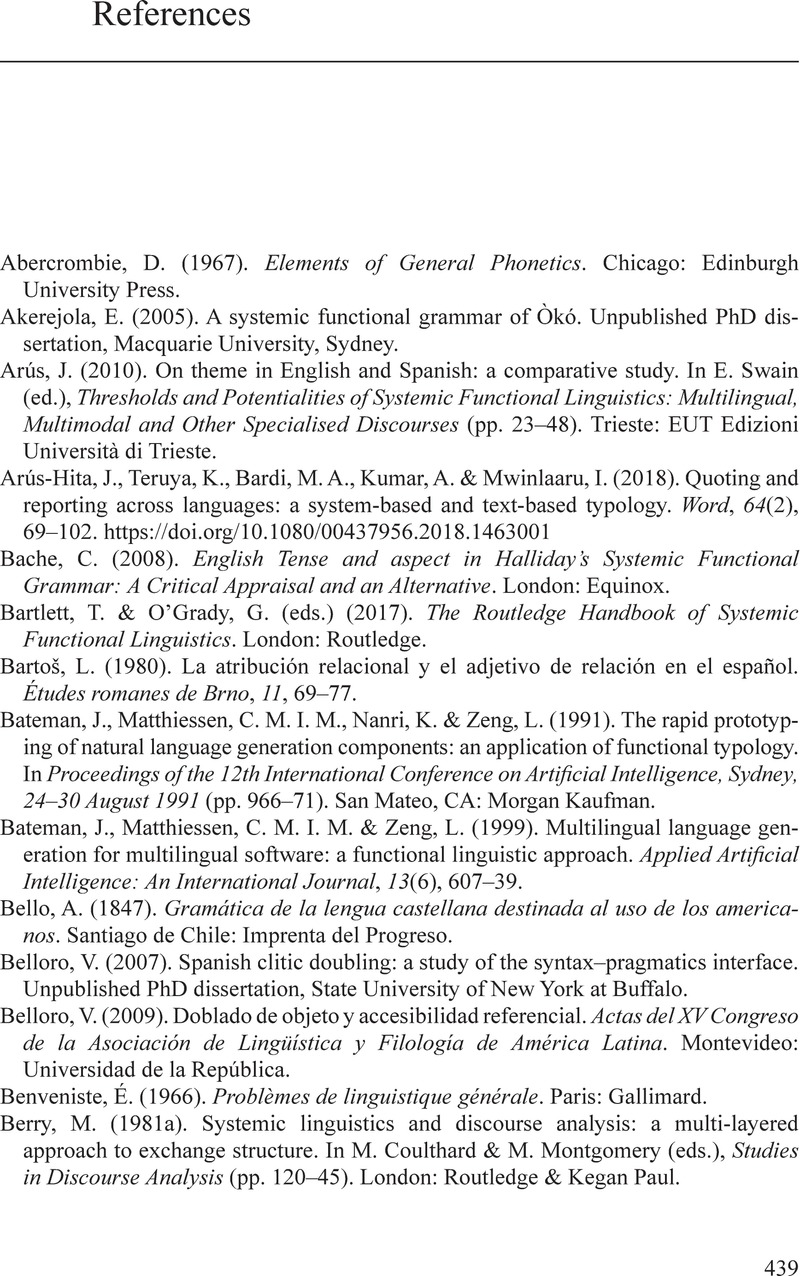Book contents
References
Published online by Cambridge University Press: 15 June 2023
Summary

Information
- Type
- Chapter
- Information
- Systemic Functional GrammarA Text-Based Description of English, Spanish and Chinese, pp. 439 - 454Publisher: Cambridge University PressPrint publication year: 2023
